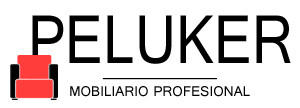Pressotherapy is an innovative aesthetic treatment that uses advanced aesthetic equipment to drain accumulated fluids in the body and reduce fluid retention. This mechanical massage applies intermittent pneumatic pressure on different body areas using inflatable boots or sleeves. It is ideal for combating cellulite, tired and heavy legs, and achieving a more defined silhouette.
What is Pressotherapy?
Explanatory paragraph Pressotherapy, also known as intermittent pneumatic pressure or mechanical lymphatic drainage, is a non-invasive therapy that employs a system of sequential inflation and deflation of inflatable sleeves or boots. These devices are placed on the limbs and apply a compression and decompression massage that promotes lymphatic and blood circulation.

How Pressotherapy Works
Explanatory paragraphs The pressotherapy equipment consists of a central unit that generates compressed air and sends it through ducts to the inflatable sleeves or boots placed on the arms, legs, or abdomen. These garments inflate and deflate in an ascending sequential pattern from the ankles to the groin or from the wrists to the shoulders.
This cyclical movement applies a pneumatic compression massage that stimulates blood and lymphatic flow. In this way, it facilitates the drainage of accumulated fluids and the elimination of toxins and metabolic waste through the lymphatic system.

Benefits of Pressotherapy
Pressotherapy provides numerous aesthetic and therapeutic benefits:
- Reduces fluid retention and the “orange peel” appearance of cellulite
- Decreases heaviness and tiredness in the legs
- Improves blood and lymphatic circulation
- Eliminates toxins and metabolic waste
- Promotes fluid drainage and deinflamation
- Slims body contours
- Tones the skin and muscles
- Relieves muscle pain and cramps
- Accelerates post-operative recovery
Contraindications of Pressotherapy
Although it is a very safe treatment, there are certain contraindications for pressotherapy:
- Venous thrombosis, phlebitis, or coagulation disorders
- Severe heart or respiratory failure
- Pregnancy
- Open wounds in the area to be treated
- Cancer or malignant tumors
- Acute infectious or inflammatory diseases
In these cases, it is recommended to consult a doctor first. Sessions should also be avoided in the presence of fever.
Frequently Asked Questions (FAQ)
What is pressotherapy?
It is a non-invasive aesthetic treatment that uses a system of intermittent pneumatic pressure to drain retained fluids and detoxify the body.
How does pressotherapy work?
Using inflatable boots or sleeves that inflate and deflate sequentially, a compression massage is applied that stimulates lymphatic and blood circulation.
What is pressotherapy used for?
It is used to reduce fluid retention, treat cellulite, eliminate toxins, deflate tired legs and arms, define body contours, and relieve muscle pain.
Is it a painful treatment?
No, pressotherapy is not painful. It is perceived as a pleasant massage that applies gentle and progressive pressure on the limbs.
How often is it recommended?
It is usual to have between 10 and 20 sessions spaced every 2 or 3 days, depending on the goals. Then, a monthly maintenance session is recommended.
How long does each session last?
The standard time for a session is approximately 30 to 45 minutes.
Can all body areas be treated?
Yes, there are specific sleeves and boots for treating legs, arms, abdomen, and other areas with fluid retention.
Is it only an aesthetic treatment?
No, in addition to its aesthetic benefits, it has therapeutic applications such as relieving circulatory problems, muscle pain, inflammation, or heaviness in the limbs.
Are there immediate results?
Yes, after the first session, relief from tired legs and more lightness is felt. Aesthetic results are progressively appreciated as the treatment continues.
How long do the results last?
The effects on fluid retention and contour definition last for several weeks or months, depending on the person’s habits and lifestyle.
Who can undergo pressotherapy?
It is suitable for most adults who want to improve their physical appearance and general well-being. Consultation is recommended in cases of severe illnesses.
Is any preparation necessary?
No special preparation is required, but it is recommended to drink plenty of water before and after the treatment to promote fluid elimination.
Can it be combined with other aesthetic treatments?
Yes, pressotherapy can be perfectly complemented with other reducing and anti-cellulite methods such as radiofrequency, manual massages, or body treatments.
Are there risks or side effects?
It is a very safe treatment when performed by qualified professionals. The only possible side effects are mild discomfort or temporary skin redness.
How much does a complete pressotherapy treatment cost?
The price of a package of 10-15 sessions is usually between €300-600, depending on the aesthetic center.
Why choose pressotherapy over other treatments?
It is a 100% natural, non-invasive, and painless method that offers multiple internal and external benefits quickly and very effectively.
Can pressotherapy sessions be done at home?
It is not recommended to use pressotherapy devices without professional supervision due to the risk of applying inappropriate pressures.
Does pressotherapy produce a rebound effect?
No, unlike other methods, it is long-lasting and does not cause any rebound effect or subsequent fluid retention.
Is it contraindicated during pregnancy?
Yes, it is not recommended during pregnancy as a precaution, although there is no evidence that it is harmful.
Can people with circulatory problems undergo pressotherapy?
It depends on the degree of impairment, but it is generally permitted as long as there are no clots, very pronounced varicose veins, etc.
How often do the sessions need to be repeated?
Initially, 10-15 sessions every 2-3 days are recommended. Subsequently, 1 monthly maintenance session is sufficient.
Is pressotherapy better than manual lymphatic drainage?
They are complementary treatments. Pressotherapy is more effective for cases of significant fluid retention.
Are there any contraindications?
Yes, it is not recommended in cases of thrombosis, phlebitis, cancer, open wounds, or severe diseases without prior medical review.
What is the difference between pressotherapy and electrotherapy?
Pressotherapy uses pressurized air, while electrotherapy applies electrical currents to stimulate tissues.
Is it an exclusive treatment for women?
No, it is equally effective and recommended for men who want to drain fluids and reshape their figure.



